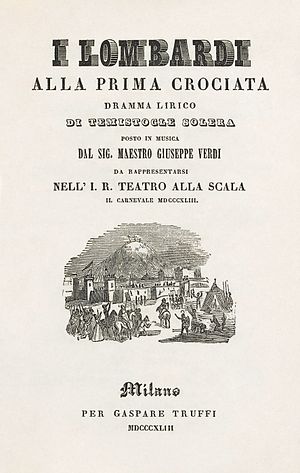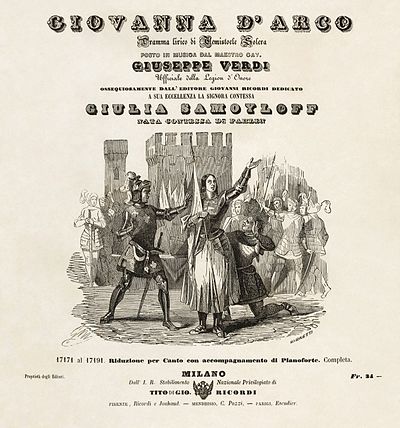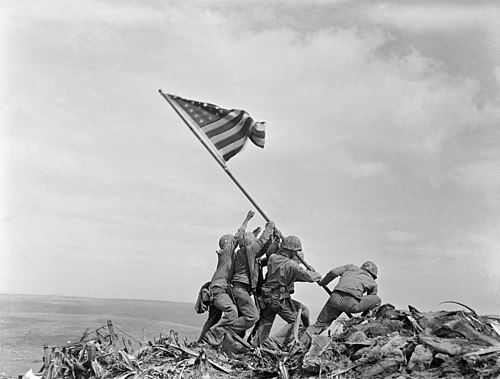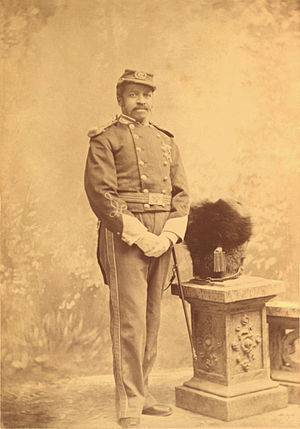Wikipedia:Picture of the day/February 2020
|
Featured picture tools: |
These featured pictures, as scheduled below, appeared as the picture of the day (POTD) on the English Wikipedia's Main Page in February 2020. Individual sections for each day on this page can be linked to with the day number as the anchor name (e.g. [[Wikipedia:Picture of the day/February 2020#1]] for February 1).
You can add an automatically updating POTD template to your user page using {{Pic of the day}} (version with blurb) or {{POTD}} (version without blurb). For instructions on how to make custom POTD layouts, see Wikipedia:Picture of the day.
February 1

|
Ibukun Odusote is a Nigerian civil servant in IT and administration. She was responsible for setting up Nigeria's country code top-level domain, .ng, and served as its first administrative contact person. Born in Ogun State, she graduated in computer science and economics from Obafemi Awolowo University and later earned an MBA and an MSc from the University of Lagos. Odusote has also served as the permanent secretary to Akinwumi Adesina at the Federal Ministry of Agriculture and Rural Development and the Political Affairs Department of the Secretary to the Government of the Federation. She was made a life patron of the Nigeria Internet Registration Association in 2013 for her pioneering work. Photograph credit: ICANN
Recently featured: |
February 2

|
Charles Maurice de Talleyrand-Périgord (2 February 1754 – 17 May 1838) was a French politician and diplomat. His career spanned the regimes of Louis XVI, Napoleon, Louis XVIII and Louis-Philippe, as well as the French Revolutionary era preceding Napoleon. Those whom he served often distrusted him but found him extremely useful, and the name "Talleyrand" has become a byword for crafty, cynical diplomacy. This portrait in oils was painted by Pierre-Paul Prud'hon in 1817, during the reign of Louis XVIII; Prud'hon had previously painted a portrait of each of Napoleon's two wives. The picture is in the collection of the Metropolitan Museum of Art in New York. Painting credit: Pierre-Paul Prud'hon
Recently featured: |
February 3

|
Ronald McNair (left), Guion Bluford (center) and Frederick D. Gregory (right) were the first three African-American astronauts to travel into space. Bluford became the second person of African descent, and the first African American, in space, as part of the STS-8 mission, which launched on August 30, 1983. He was a NASA mission specialist on three more Space Shuttle missions: STS-61-A, STS-39 and STS-53. McNair became the second African American to travel into space, as mission specialist on STS-41-B, which launched on February 3, 1984. He died on his second mission, STS-51-L, which ended in the Space Shuttle Challenger disaster on January 28, 1986. Gregory was the first African American to pilot a Space Shuttle, during STS-51-B, which launched on April 29, 1985. He became the first African American to command a mission, during STS-33, and was also the commander of STS-44. This picture shows the three astronauts in 1978, the year in which they were selected as members of NASA Astronaut Group 8, along with thirty-two others. Photograph credit: NASA; restored by Coffeeandcrumbs
Recently featured: |
February 4

|
Rosa Parks (February 4, 1913 – October 24, 2005) was an American activist in the civil rights movement, best known for her pivotal role in the Montgomery bus boycott. On December 1, 1955, in Montgomery, Alabama, Parks rejected a bus driver's order to relinquish her seat in the "colored section" to a white passenger after the whites-only section was filled, inspiring the African-American community to boycott the Montgomery buses for more than a year. Her act of defiance and the boycott became important symbols of the civil rights movement and resistance to racial segregation. After her conviction for disorderly conduct, her appeal became bogged down in the state courts, but the federal Montgomery bus lawsuit, Browder v. Gayle, succeeded in overturning bus segregation in November 1956. Upon her death, Parks became the first woman to lie in honor in the U.S. Capitol rotunda. This photograph of Parks being fingerprinted was taken on February 22, 1956, when she was arrested again, along with 73 others, after a grand jury indicted 113 African Americans for organizing the Montgomery bus boycott. Photograph credit: Associated Press; restored by Adam Cuerden |
February 5

|
The Australia Telescope Compact Array is a radio telescope operated by the Commonwealth Scientific and Industrial Research Organisation (CSIRO) at the Paul Wild Observatory, 25 km (16 mi) west of the town of Narrabri in New South Wales, Australia. The telescope is an array of six identical dishes each 22 metres (72 ft) in diameter, which commonly operate in aperture synthesis mode to produce images from radio waves. Five of the dishes can be moved along a 3-kilometre (2 mi) railway track; the sixth is situated three kilometres west of the end of the main track. Each dish weighs about 270 tonnes (270 long tons; 300 short tons). This photograph, showing five of the Australia Telescope Compact Array's dishes, was taken around 1984, in the late phase of the construction process. It is a long-exposure photograph taken in darkness in the late evening; during the exposure, the photographer, John Masterson, walked around the dishes firing off over 130 flashes using a hand-held flash gun. Photograph credit: John Masterson, CSIRO; restored by Bammesk |
February 6

|
The Indian vulture (Gyps indicus) is an Old World vulture native to India, Pakistan and Nepal. It has been listed as critically endangered on the IUCN Red List since 2002. The cause of the catastrophic reduction in their numbers has been identified to be the use by farmers of the veterinary drug diclofenac, a nonsteroidal anti-inflammatory drug which extends an animal's working life, but makes its carcase toxic to vultures if the drug was recently administered. The Indian government has banned the use of the drug, and it is hoped that the vultures will stage a comeback. This photograph shows a group of Indian vultures nesting on a tower of Chaturbhuj Temple in Orchha, Madhya Pradesh. Photograph credit: Yann Forget; edited by Samsara and Christian Ferrer |
February 7

|
Rain is an oil-on-canvas painting by Dutch painter Vincent van Gogh, part of The Wheat Field, a series that he executed in 1889 while a voluntary patient in the Saint-Paul asylum near Saint-Rémy-de-Provence, France. Through his cell window on the upper floor, he could see an enclosed wheat field, and he made about a dozen paintings of it over the changing seasons. In this work, he represented falling rain with diagonal lines of paint. The style is reminiscent of Japanese prints, but the effect is stylistically personal to Van Gogh. Seen through his rain-splattered window, he shows its bleak aspect in November, with grey clouds overhead and the wheat already harvested. The painting is now in the collection of the Philadelphia Museum of Art. Painting credit: Vincent van Gogh
Recently featured: |
February 8

|
William Grant Still (1895–1978) was an American composer of nearly 200 works, including five symphonies and nine operas. Often referred to as the "Dean of Afro-American Composers", Still was the first American composer to have an opera produced by the New York City Opera. His first symphony, entitled Afro-American Symphony, was until 1950 the most widely performed symphony composed by an American. Born in Mississippi, he grew up in Little Rock, Arkansas, attended Wilberforce University and Oberlin Conservatory of Music, and was a student of George Whitefield Chadwick and later Edgard Varèse. Still was the first African American to conduct a major American symphony orchestra and the first to have an opera performed on national television. Due to his close association and collaboration with prominent African-American literary and cultural figures, he is considered to be part of the Harlem Renaissance movement. This picture of Still was taken by Carl Van Vechten in 1949; the photograph is in the collection of the Library of Congress in Washington, D.C. Photograph credit: Carl Van Vechten; restored by Adam Cuerden
Recently featured: |
February 9

|
This picture shows a ten-sen banknote, in use during the 1914–1922 Japanese occupation of Tsingtao (Qingdao), China, as part of the Asian and Pacific theatre of World War I. Issued by the Bank of Japan, the currency was based on the silver standard. This banknote, dated 1914, is in the National Numismatic Collection of the Smithsonian Institution's National Museum of American History. Before the outbreak of World War I, German naval ships were located in the Pacific; Tsingtao developed into a major seaport while the surrounding Kiautschou Bay area was leased to Germany since 1898. During the war, Japanese and British Allied troops besieged the port in 1914 before capturing it from the German and Austro-Hungarian Central Powers, occupying the city and the surrounding region. It served as a base for the exploitation of the natural resources of Shandong province and northern China, and a "New City District" was established to furnish the Japanese colonists with commercial sections and living quarters. Tsingtao eventually reverted to Chinese rule by 1922. Banknote design credit: Bank of Japan; photographed by Andrew Shiva
Recently featured: |
February 10

|
Calumma brevicorne, the short-horned chameleon, has a compressed body, spindly legs, grasping feet and a powerful prehensile tail that allows it to negotiate the branches and twigs of its arboreal habitat. Its most distinctive features are its large, ear-like flaps, and the short bony appendage that projects from the snout of the male. Chameleons are primarily insectivores and feed by ballistically projecting their long tongues from their mouths to capture prey located some distance away. This picture shows a C. brevicorne female, photographed at night near Analamazaotra Special Reserve, part of Andasibe-Mantadia National Park in Madagascar, the island to which the species is endemic. In these forests, the population density of short-horned chameleons is approximately 2.4 per hectare (1.0 per acre). Photograph credit: Charles J. Sharp
Recently featured: |
February 11

|
I Lombardi alla prima crociata ('The Lombards on the First Crusade') is an operatic dramma lirico by Giuseppe Verdi, first performed on 11 February 1843 at the Teatro alla Scala in Milan, Italy. It is based on an epic poem by Tommaso Grossi, with an Italian libretto by Temistocle Solera. The plot concerns a fictional family and its involvement in the First Crusade, appealing to the patriotic fervour of the time. The first British performance took place in London in May 1846, followed a year later by its premiere in New York, where it was the first of Verdi's operas to be performed in the United States. The opera was translated into French and significantly rewritten as Jérusalem, Verdi's first grand opera, which opened in Paris in November 1847. This picture shows the title page of a very early edition of the libretto of I Lombardi alla prima crociata, possibly the first edition, dating to the time of the opera's premiere in 1843. Illustration credit: unknown; restored by Adam Cuerden
Recently featured: |
February 12

|
|
"I Have a Dream" is a public speech that was delivered by American civil rights activist Martin Luther King Jr. during the March on Washington for Jobs and Freedom on August 28, 1963, in which he called for civil and economic rights and an end to racism in the United States. Delivered to more than 250,000 civil rights supporters from the steps of the Lincoln Memorial in Washington, D.C., the speech was a defining moment of the civil rights movement and among the most iconic speeches in U.S. history. Beginning with a reference to the Emancipation Proclamation, which declared millions of slaves free in 1863, King said "one hundred years later, the Negro still is not free". Toward the end of the speech, King departed from his prepared text for a partly improvised peroration on the theme "I have a dream", prompted by Mahalia Jackson's cry: "Tell them about the dream, Martin!" In this part of the speech, which most excited the listeners and has now become its most famous, King described his dreams of freedom and equality arising from a land of slavery and hatred. The speech was ranked the top American speech of the 20th century in a 1999 poll of scholars of public address. This photograph, taken by Rowland Scherman, features King and fellow civil rights activist Mathew Ahmann (with glasses) among a crowd of other protestors during the March on Washington. Photograph credit: Rowland Scherman; restored by Adam Cuerden
Recently featured: |
February 13

|
Marian Dawkins (born 13 February 1945) is a British biologist and professor of ethology at the University of Oxford. Previously married to evolutionary biologist Richard Dawkins, her research has focused on animal behaviour and animal welfare. She is sceptical as to whether science can establish that animals have consciousness, and therefore its role in the definition and measurement of animal welfare and suffering. Instead, her view is that good animal welfare depends on determining the needs and wants of the animals; she studied the activities and interactions of hens and deduced that the availability of floor-space in traditional battery cages deprived the birds of their ability to participate in their natural behaviours. This photograph of Dawkins was taken at the Royal Society's admissions day in 2014, when she was admitted as a fellow of the oldest scientific academy in continuous existence. Photograph credit: Royal Society; edited by Chris Woodrich
Recently featured: |
February 14

|
The Kiss is an 1859 painting by the Italian artist Francesco Hayez, possibly his best known work. The painting symbolizes the romantic, nationalist and patriotic ideals of the Risorgimento, the movement towards Italian unification. Outwardly a passionate embrace between two anonymous individuals, the image has hidden meaning; shadowy figures at bottom left give an impression of conspiracy and danger. The man's foot resting on the step and the tight grasp with which his beloved is holding him convey the imminence of his departure. The dagger hidden in the mantle may refer to the imminent rebellion against the Habsburg invader, and the chromatic range of the picture symbolizes the political changes that involved Italy at the time, the blue of the woman's dress and the bright red of the young man's tights alluding to the colours of the French flag. The picture is in the collection of the Pinacoteca di Brera in Milan. Painting credit: Francesco Hayez
Recently featured: |
February 15

|
Giovanna d'Arco is an opera in a prologue and three acts by Giuseppe Verdi, loosely based on the story of Joan of Arc as depicted in the play The Maid of Orleans by Friedrich Schiller, and set to an Italian libretto by Temistocle Solera. Verdi wrote the music during the autumn and winter of 1844–45; the opera premiered at La Scala in Milan on 15 February 1845. While contemporary critics were rather dismissive, it was "ecstatically received" by audiences, and given a respectable run of seventeen performances. This picture is the title page from a variant of the first-edition vocal score of Giovanna d'Arco, published around 1846. Soprano Erminia Frezzolini sang the title role at the first performance, opposite her husband, tenor Antonio Poggi, who played the role of Charles VII of France. The "GM" scrawled at the lower left of the illustration may be the initials of the set designer, Girolamo Magnani, while "Barinetti" at the lower right refers to Luigi Barinetti, the illustrator. Illustration credit: Luigi Barinetti; restored by Adam Cuerden
Recently featured: |
February 16

|
The Dharmaraya Swamy Temple is one of the oldest temples in Bangalore, India. It is thought to be more than 800 years old and is built in the Dravidian style, with a gopuram, an ornate monumental entrance tower. Gods worshipped here include Dharmaraya, Krishna, Arjuna, Draupadi and Bhima. The Karaga festival starts from the temple each year; the festival is dedicated to Draupadi, the most important female character in the Hindu epic, the Mahabharata. Starting at midnight, a priest dressed as a woman carries an earthen pot filled with water and adorned with decorations several feet high on his head in procession through the town, preceded by hundreds of bare-chested, dhoti-clad, turbaned Veerakumaras bearing unsheathed swords. Photograph credit: Muhammad Mahdi Karim
Recently featured: |
February 17

|
Doris Miller (1919–1943) was an American sailor in the United States Navy. He was awarded the Navy Cross, seen here just after being presented to him, for manning an anti-aircraft gun during the attack on Pearl Harbor on December 7, 1941, a role for which he had no training, and for tending the wounded. He was the first black American to be awarded the Navy Cross, and his actions were heavily publicized in the black press, making him an iconic emblem of the war for black Americans. Nearly two years later, he was killed in action when the USS Liscome Bay was sunk by a Japanese submarine during the Battle of Makin. Photograph credit: United States Navy; restored by Coffeeandcrumbs
Recently featured: |
February 18

|
|
Bosc's fringe-toed lizard (Acanthodactylus boskianus) is a medium-sized species of lizard found in northern Africa and the Arabian Peninsula. Active during the day, they are energetic foragers for insects and other small invertebrates, and are one of the most common lizards in their range. Males and females are similar in appearance, both having a snout-to-vent length of between 5 and 8 cm (2.0 and 3.1 in), but males are usually larger. The feet have long slender digits that are fringed. The dorsal surface is olive-grey with five longitudinal dark stripes, the middle one of which subdivides at the neck, while the ventral surface is whitish, but in the female, the underside of the tail becomes suffused with red during the breeding season. In juveniles, the tail is blue. This picture shows two A. b. asper lizards photographed in Dana Biosphere Reserve, Jordan, engaging in a love bite, a courtship ritual that may be connected to certain chemical cues present in the skin. Photograph credit: Charles J. Sharp
Recently featured: |
February 19

|
The Café-Concert is an 1879 oil-on-canvas painting by French artist Édouard Manet, now in the collection of the Walters Art Museum in Baltimore, Maryland. It is one of several works set in the Brasserie Reichshoffen on the Boulevard Marguerite-de-Rochechouart in Paris, depicting social life at the end of the 19th century. The three main figures in the work form a triangle, each seemingly unaware of the presence of the others; the waitress drinks beer, the woman at the bar smokes a cigarette and appears subdued, and the man watches the performance of singer "La Belle Polonaise", reflected in a mirror in the background. The figures of the individuals represented are not clearly defined, but modelled with brushstrokes. Manet was one of the first 19th-century artists to paint modern life, and was a pivotal figure in the transition from Realism to Impressionism. Painting credit: Édouard Manet
Recently featured: |
February 20

|
|
The Portuguese escudo was the currency used in Portugal prior to the introduction of the euro on 1 January 1999. One escudo was subdivided into a hundred centavos. In addition, the escudo was also an 18th-century denomination of the real, the currency used before the 5 October 1910 revolution. This picture shows a gold coin worth eight escudos minted in 1729, during the reign of John V. The obverse (left) features a portrait of the monarch in profile, with an abbreviated Latin inscription translating to 'John V, by the grace of God, King of Portugal and the Algarves'. The reverse (right) depicts the Portuguese coat of arms, supported by two dragons on either side and surmounted by a crown. While various denominations of the gold escudo were produced between 1722 and 1821, the eight-escudo coin was only struck for a fairly brief period, first in 1722, and again between 1724 and 1730. This particular coin is part of the National Numismatic Collection at the Smithsonian Institution's National Museum of American History. Coin design credit: Kingdom of Portugal / Casa da Moeda; photographed by the National Numismatic Collection
Recently featured: |
February 21

|
This picture is a color lithograph advertisement from 1894, showing the interior of a Pullman dining car belonging to the Cincinnati, Hamilton and Dayton Railway. It depicts two men seated at a table being served by an African-American Pullman porter. Visible through the window is the Mosler Safe Works in Hamilton, Ohio, from which newly-manufactured goods are being loaded onto barges on the Great Miami River. Starting soon after the American Civil War, George Pullman sought out former slaves to work on his sleeping cars. Until the 1960s, Pullman porters were exclusively black and, in 1925, under the leadership of A. Philip Randolph, they formed the first all-black union, the Brotherhood of Sleeping Car Porters. They were supervised by a Pullman conductor, who was then invariably white. In 1926, Pullman employed more than 10,000 porters, a term that has been superseded by "sleeping car attendant". Lithograph credit: Strobridge Lithographing Company
Recently featured: |
February 22

|
|
The Tarvasjõgi is a 30-kilometre-long (19 mi) river in Estonia. It is a tributary of the Jäneda, which in turn flows into the Jägala and thence to the Baltic Sea, and has a 64.7-square-kilometre (25.0 sq mi) drainage basin. This picture shows the Tarvasjõgi flowing through a forested landscape in the Põhja-Kõrvemaa Nature Reserve. The area was scoured by glaciers, the most recent one retreating 12,000 years ago, and displays diverse features, including eskers, sand and gravel kames, fens, sandy heaths, bogs, and more than thirty lakes. Almost half of the reserve is covered by bog and riparian forests, with a forest cover of 40 percent consisting mostly of coniferous trees. Wolves, Eurasian lynxes and brown bears can be found here, as well as protected birds such as black storks, golden eagles, western capercaillies and common cranes. Photograph credit: Ireen Trummer
Recently featured: |
February 23

|
|
Raising the Flag on Iwo Jima is an iconic photograph of six United States Marines raising the U.S. flag atop Mount Suribachi during the Battle of Iwo Jima in the final stages of the Pacific War. The photograph, taken by Joe Rosenthal of the Associated Press on February 23, 1945, was first published in Sunday newspapers two days later and reprinted in thousands of publications. It was the only photograph to win the Pulitzer Prize for Photography in the same year as its publication, and was later used for the construction of the Marine Corps War Memorial in 1954, which was dedicated to honor all Marines who died for their country since 1775. The memorial, sculpted by Felix de Weldon, is located in Arlington Ridge Park, near the Ord-Weitzel Gate to Arlington National Cemetery and the Netherlands Carillon. The photograph has come to be regarded in the United States as one of the most significant and recognizable images of World War II. Photograph credit: Joe Rosenthal; restored by Bammesk
Recently featured: |
February 24

|
Equestrian Portrait of Charles V is an oil-on-canvas painting by Italian Renaissance artist Titian. Created between April and September 1548, while Titian was at the imperial court of Augsburg, it is a tribute to Charles V, Holy Roman Emperor, following his victory in the Battle of Mühlberg of April 1547 against the Protestant armies of the Schmalkaldic League. The portrait gains its impact in part by its directness and sense of contained power: the horse's strength seems just in check, and Charles's brilliantly shining armour and the painting's deep reds are reminders of battle and heroism. Titian recorded all of the foreground elements – the horse, its caparison, and the rider's armour – from those used in the actual battle. Both the armour and the harness survive, and are kept at the Royal Armoury of Madrid. In 1827, the painting was acquired by the Museo del Prado in Madrid, where it hangs at present. Painting credit: Titian
Recently featured: |
February 25

|
The Bucentaur was the state barge of the doge of Venice. Several vessels were built for this purpose over the years, and this one, the most magnificent, made its maiden voyage on Ascension Day, 1729. A two-deck floating palace some 35 m (115 ft) long, its main salon had a seating capacity of 90; the doge's throne was in the stern, and the prow bore a figurehead representing Justice with sword and scales. When Napoleon ordered the destruction of the ship in 1798 to symbolize his victory in conquering the Venetian Republic, the vessel burned for three days, and French soldiers used 400 mules to carry away the gold. This picture is an oil-on-canvas painting by Italian artist Canaletto, showing the Bucentaur on the Venetian Lagoon with various other vessels, returning to the pier following the Marriage of the Sea ceremony on Ascension Day. St Mark's Campanile and the Doge's Palace are visible in the background. The work is now in the collection of the Pushkin Museum in Moscow. Painting credit: Canaletto
Recently featured: |
February 26

|
The Cape ground squirrel (Xerus inauris) is a medium-sized rodent native to South Africa, Namibia and Botswana. They live in social groups of up to three adult females and several sub-adults. The species mainly inhabits arid or semi-arid areas, preferring velds and grasslands with compact soil, and can also be found in scrub, on floodplains and in agricultural areas. Males live independently, only joining groups when there is a female in estrus. Ever alert to danger, they can drive off predators such as snakes by engaging in mobbing behavior. This picture shows two Cape ground squirrels photographed in the Namib desert near Solitaire, Namibia. Photograph credit: Hans Hillewaert
Recently featured: |
February 27

|
Christian Fleetwood (1840–1914) was an African-American non-commissioned officer who enlisted in the Union Army in 1863, during the American Civil War. He was given the rank of sergeant upon enlistment, and was later promoted to sergeant major. The following year, his unit, the 4th United States Colored Infantry Regiment, took part in the Battle of Chaffin's Farm, suffering heavy casualties. When the flag-bearer was wounded, Fleetwood, along with private Charles Veale, each grabbed a flag before the colors could touch the ground, and continued through heavy enemy fire. For their actions during the battle, each man received the Medal of Honor. After the war, he worked as a bookkeeper and served in the District of Columbia National Guard. Photograph credit: unknown; restored by Adam Cuerden
Recently featured: |
February 28

|
Youth is the second in a series of allegorical oil-on-canvas paintings by American artist Thomas Cole, entitled The Voyage of Life, which represent man's journey through life. In the painting, an enthusiastic young man takes the tiller of the boat, leaving the angel who previously guided it on the shore. He glides through a serene, verdant landscape, with lofty trees and towering mountains. In the distance, a castle hovers in the sky, a white and shimmering beacon representing the ambitions and dreams of man. This painting, along with the other three in the series, was painted in 1842 and is held by the National Gallery of Art in Washington, D.C. Painting credit: Thomas Cole
Recently featured: |
February 29

|
Gioachino Rossini (29 February 1792 – 13 November 1868) was an Italian composer who gained fame for his 39 operas, although he also wrote many songs, some chamber music and piano pieces, as well as sacred music. He set new standards for both comic and serious opera before retiring from large-scale composition while still in his thirties, at the height of his popularity. By the early 1850s, Rossini's mental and physical health had deteriorated; he moved to Paris for the more advanced medical care available, remaining there for the rest of his life. His health improved, and he started composing again. He and his wife established a musical salon in Paris on Saturday evenings, which became internationally renowned. This photograph of Rossini, by French journalist, caricaturist and photographer Étienne Carjat, was taken in 1865. Photograph credit: Étienne Carjat; restored by Adam Cuerden
Recently featured: |
Picture of the day archives and future dates
